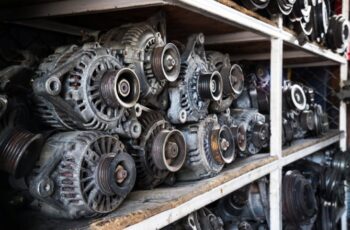Your car’s suspension system plays a major role in ensuring a smooth and comfortable ride, as well as proper braking efficiency. Unfortunately, it’s not uncommon for issues to crop up on even the most well-maintained vehicles. In this blog article, we’ll explore some common suspension system issues and how to detect them early – providing you with peace of mind knowing how to fix them if they ever arise.
Introduction and Overview of Suspension System
Your car’s suspension system is one of the most important safety features. It helps your tires grip the road, and it makes your ride more comfortable by absorbing bumps in the road. But like all car parts, suspension components can wear out or break. When that happens, you’ll start to notice some uncomfortable (and potentially dangerous) symptoms.
People Also Search: Factors that have an impact on the trend of the Automotive Industry?
Here are common suspension system issues to look out for, and how to fix them:
1. Uneven tire wear
If you notice that your tires are wearing unevenly, it could be a sign that your suspension is not working properly. Uneven tire wear can be caused by a variety of factors, but if your suspension is to blame, you’ll likely need to have it repaired or replaced.
2. A rough ride
Another symptom of a failing suspension is a rougher ride than usual. If you find yourself being jostled around more than usual when driving on even roads, it’s time to get your suspension checked out.
3. Leaking fluid
If you see fluid leaking from any part of your suspension system, it’s a definite sign that something is wrong. Leaking fluid can cause further damage to your suspension components, so it’s important to get it fixed as soon as possible.
Common Suspension System Issues & Diagnostic Tests to Identify Problems
When it comes to your car’s suspension system, there are a few common issues that can arise. Luckily, there are also diagnostic tests that can be performed in order to identify any problems. Here are some of the most common suspension system issues, as well as the diagnostic tests that can be used to identify them:
1. Leaks in the airbags or shocks: If you notice that your car is sagging on one side or that the ride is not as smooth as it used to be, there may be a leak in one of the airbags or shocks. In order to check for leaks, a mechanic will use a pressure gauge to test the pressure in each airbag or shock. If the pressure is low, it indicates a leak.
2. Worn-out suspension components: Over time, suspension components can wear out and cause problems. A mechanic will check for wear by looking at all of the suspension components for signs of wear and tear. They will also look at how these components are working together and whether they are properly aligned.
3. Damaged suspension components: Due to road conditions or other factors, suspension components can become damaged. A mechanic will inspect all of the suspension components for any signs of damage such as cracks, dents, or leaks.
How To Fix Common Suspension System Issues
Suspension system issues are common in all types of vehicles. There are a few key things to look for when troubleshooting suspension problems. First, check the condition of the shocks and struts. If they are worn or damaged, they will need to be replaced. Next, check the alignment of the suspension components. If they are out of alignment, they will need to be adjusted or replaced. Finally, check the condition of the bushings and bearings. If they are worn or damaged, they will need to be replaced.
Tips For Maintaining Your Suspension System
Suspension systems are crucial for keeping your car functioning properly. If you notice any issues with your suspension system, it’s important to take care of them right away. Here are some tips for maintaining your suspension system:
1. Check your shock absorbers and struts regularly. These components help dampen the effects of bumps and potholes, so they need to be in good condition.
2. Inspect your tires regularly. Uneven tire wear can be a sign that your suspension is not working properly.
3. Be careful when driving over obstacles. Hitting a pothole or curb can damage your suspension components.
4. Have your suspension system checked by a mechanic if you notice any problems.
When Is It Time to Replace Parts or the Entire Suspension System?
If your car is feeling bouncy or you hear strange noises coming from the suspension, it may be time to start thinking about replacing parts or even the entire system. Here are a few signs that it’s time to take action:
-Your car sags at one end or rocks back and forth when you stop
-There are cracks or leaks in any of the suspension components
-The shocks feel soft and spongy when tested
-You can see grease or oil leaking from any of the parts
-Any of the bolts or nuts holding the system together are loose or missing
Conclusion
In conclusion, vehicle suspension systems are often overlooked in regards to regular maintenance. Unfortunately, when ignored for too long they can become damaged and cause you to incur expensive repair bills. It is important that you know how to check for common issues with your car’s suspension system and take any appropriate action as soon as possible if something is wrong. By doing this, you will ensure your car runs smoothly and safely on the roads all year round!




